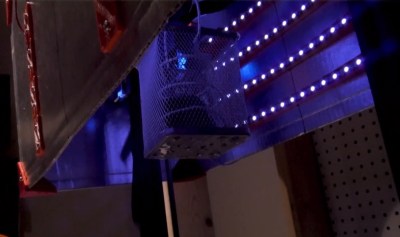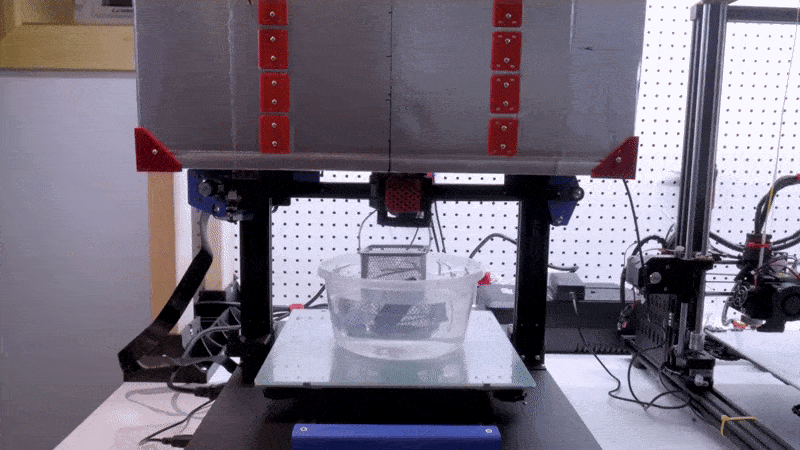The dramatic price reductions we’ve seen on resin 3D printers over the last couple of years have been very exciting, as it means more people are finally getting access to this impressive technology. But what newcomers might not realize is that the cost of the printer itself is only part of your initial investment. Resin printed parts need to be washed and cured before they’re ready to be put into service, and unless you want to do it all by hand, that means buying a second machine to do the post-printing treatment.
Not sure he wanted to spend the money on a dedicated machine just yet, [Chris Chimienti] decided to take an unusual approach and modify one of his filament-based 3D printers to handle wash and cure duty. His clever enclosure slips over the considerable Z-axis of a Anet ET5X printer, and includes banks of UV LEDs and fans to circulate the air and speed up the drying process.

The curing part is easy enough to understand, but how does it do the washing? You simply put a container of 70% isopropyl alcohol (IPA) on the printer’s bed, and place the part to be washed into a basket that hangs from the printer’s extruder. Custom Python software is used to generate G-code that commands the printer to dip the part in the alcohol and swish it back and forth to give it a good rinse.
Once the specified time has elapsed, the printer raises the part up into the enclosure and kicks on the LEDs to begin the next phase of the process. The whole system is automated through an OctoPrint plugin, and while the relatively low speed of the printer’s movement means the “washing” cycle might not be quite as energetic as we’d like, it’s definitely a very slick solution.
[Chris] provides an extensive overview of the project in the latest video on his YouTube channel, Embrace Racing. In it he explains that the concept could certainly be adapted for use on printers other than the Anet ET5X, but that it’s considerable build volume makes it an ideal candidate for conversion. Of course it’s also possible to use the foam board enclosure by itself as a curing chamber, though you’ll still need to wash the part in IPA ahead of time.
This is perhaps one of the most unusual wash and cure systems we’ve seen here at Hackaday, but we appreciate the fact that [Chris] based the whole thing on the idea that you’ve probably got a FDM printer sitting nearby that otherwise goes unused when you’re working with resin. If that’s not the case for you, putting together a more traditional UV curing chamber is an easy enough project.















Check out PCB etching shaker mechanism with transparent bottom and simple UV LED every side. Lot less overkill.
A massive open tub of IPA like that seems like a bad idea, that stuff smells, isn’t that cheap and vaporises really easily so will really stink the place out and cost you heaps extra, so having a lid on it as much as possible would for me be an essential – probably why most wash and cures use a magnetic spinner to move the liquid not the part…
If you really want to keep using this 3d printer for that with minimal modification it would be easy enough to do so though – just clip a FDM printed cam mechanism against the bed axis to generate the rotation and hold the tub on a frame/shelf fixed to the Z arms. And I can salute not wanting to buy a whole new machine when you can retrofit what you have. I just couldn’t live with having such a large surface area of IPA free to get up my nose (and more importantly none of the folks I live with are likely to tolerate it either)…
He could recompile marlin firmware with a much higher max feed rate and raise the max acceleration to get better washing action. Go in to advanced settings during the wash cycle and play around with those settings until you have the desired effect. Accuracy and fine movement is no longer an issue at this point.
I think part of the point is that the FDM printer can still be used for printing, it’s not a permanent modification. Twiddling with the firmware or running the machine around at higher than normal speeds, might impact that.
Thanks for the comments guys. Yes the IPA is one option, but you can also use Monocure “resin away” product which doesn’t have the same smell or issues associated with IPA. Or… if using water washable resins you can just use water of course :) For sure there are improvements and issues with what I did here, but all in all it was a fun project to try and get it to work.